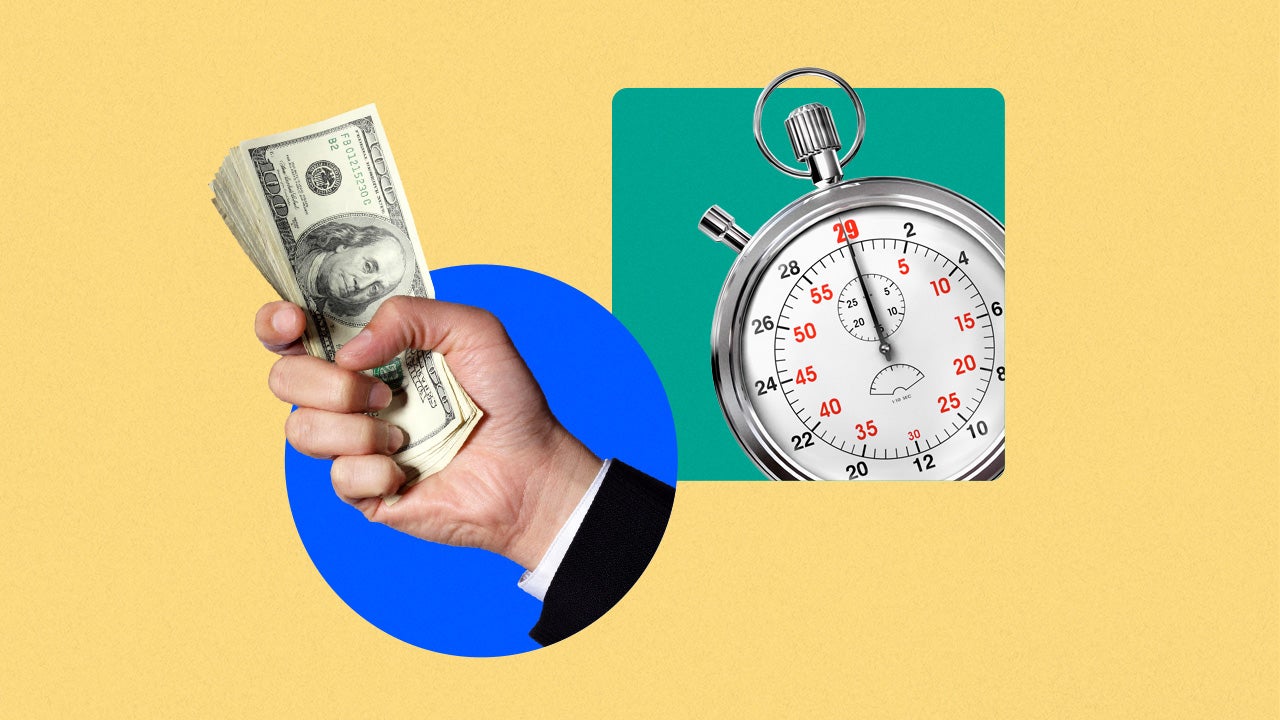Where to get a bad credit business loan

Key takeaways
- Business owners with bad credit can still get a business loan, although they may face higher interest rates and fees
- Business owners with bad credit can explore online lenders, the U.S. Small Business Administration and Community Development Financial Institutions
- Carefully consider all options and weigh the benefits and drawbacks of each type of loan before applying to avoid further damaging your credit
A bad credit business loan is a form of financing designed for business owners with less-than-perfect credit. These financial products are popular choices for people who want to start a business with bad credit and no money. Although they are more accessible than traditional bank loans, it can be challenging to find affordable bad credit business loans. Many come with steep interest rates and fees, resulting in a monthly payment that could create cash flow challenges in your company.
If you want to start a business with bad credit or your business is in dire need, a bad credit business loan might be your only option. But that doesn’t mean you should take the first one that comes your way.
Before settling for a loan with unreasonable terms, there are several types of bad credit lenders to consider and compare.
Online lenders
Online lenders are a popular choice if you want to get a bad credit business loan. These alternative lenders offer funding solutions that are more accessible to credit-challenged borrowers than traditional bank loans. Some will even accept a credit score as low as 500.
These lenders can also help you get a business off the ground since they often have more flexible requirements around annual revenue and time in business. Some online lenders also offer online pre-qualification tools that let you view loan quotes without impacting your credit score.
In other words, if you’re starting a business with no money and bad credit, start here.
Pros
- Streamlined lending process: You can generally apply online in minutes and get a quick funding decision. Some lenders also disburse funds as soon as the same or the next business day following approval.
- Lenient eligibility guidelines: Several online lenders offer business financing options with lower credit scores and time-in-business guidelines.
Cons
- Higher interest rates and fees: Online fees and interest rates for bad credit business loans are often higher than you’d get with a bank or credit union.
- Short repayment periods: Many online lenders only offer short-term loans, especially to struggling businesses and those trying to start a business with bad credit and no money. You may have to make weekly or biweekly payments toward your loan.
To qualify for a bad credit business loan, lenders typically require you to have strong revenue and a suitable amount of time in business, which are factors that can help show you will be able to repay the loan.
U.S. Small Business Administration (SBA)
The SBA states it’s possible to qualify for loans even with bad credit, but it’s up to the lender that actually funds the loan. Even though you’ll need good or excellent credit to qualify for most types of SBA loans, you have some other SBA-backed options.
Specifically, SBA microloans have more relaxed eligibility requirements than other SBA-backed loans. They come in smaller loan amounts, but they may be a good option to help businesses facing financial difficulty or people starting a business with no money and bad credit.
Community Advantage Small Business Lenders (CA SBLCs) are also an option. CA SBLCs offer 7(a) loans up to $350,000 in underserved markets. Some businesses that are eligible include businesses less than two years old, veteran-owned businesses and those located in low-to-moderate income communities.
All SBA loans are accessible through SBA-approved lenders, and you can use the Lender Match tool to find options in your local area.
Pros
- Attractive terms: The interest rates and fees are usually similar to traditional bank loans.
- Educational resources: Borrowers get access to resources to help start and expand their companies.
Cons
- Complex application process: It can be challenging to navigate the application process, which requires more documentation than traditional loans.
- Slow funding times: It could take some time to hear back from the SBA and several weeks or months before you’re approved for funding.
Traditional banks
It’s not uncommon for business loans from traditional banks to feature higher loan amounts, lower interest rates and extended repayment periods, but these perks are typically only available to borrowers with solid credit.
Even so, a bank may offer secured financing options to a borrower with a lower credit score. It could be a start to establishing a solid relationship, and you can start rebuilding your credit since most banks report account activity to the credit bureaus.
Pros
- Establish relationships: If you get a business loan with a traditional bank and manage it responsibly, you could open the door to more attractive funding opportunities.
- Build business credit: You can start building business credit if the bank reports to the business credit bureaus.
Cons
- Collateral requirements: If you qualify for a secured business loan, you’ll need to put up collateral to receive funding.
- Strict eligibility requirements: Traditional banks typically require two years in business and annual revenues of $100,000 to $250,000.
Community development financial institutions
Community development financial institutions (CDFIs) serve those overlooked borrowers in minority and low-income communities who struggle to access funding from traditional lenders. They’re made up of banks, credit unions, depository holding companies, loan funds and venture capital funds. Small businesses in underserved communities may have luck securing funding through CDFIs.
Pros
- Competitive rates: You may be eligible for a small business loan at a competitive rate, even with poor credit.
- Educational services: CDFIs often offer a variety of financial education services to their borrowers.
Cons
- Longer wait for funding: It can take weeks to get your funds compared to hours or days when you work with an online lender.
- Limited accessibility: Funding opportunities are limited to small business owners in low-income and minority communities.
Minority depository institutions
Minority Depository Institutions (MDIs) are banks and credit unions majority-owned by minorities. Anyone can bank with these institutions, but each specializes in working with underserved and disadvantaged communities. That includes low- and moderate-income communities, people of color, women and veterans.
Pros
- Targeted products and services: Many MDIs are organized to serve specific underserved groups, including minorities (such as Black or Hispanic business owners). If you can find an MDI that gears its offerings toward you, it may make it easier to get the help and financing you need.
- Educational services: Like CDFIs, some MDIs also help their customers learn how to manage their money.
Cons
- Not as accessible to everyone: These institutions focus on low-income areas and are usually concentrated in metropolitan areas, so rural business areas may have trouble accessing them.
- Lack of resources: MDIs don’t have the financing of larger traditional banks. So they may not be able to offer as many loans to borrowers or may lack the ability to offer online loans.
Invoice factoring companies
Invoice factoring companies let you exchange your invoices for cash — typically up to 85 percent of their value. Perfect credit isn’t required to qualify for invoice factoring since the invoices are used as collateral, and the creditworthiness of your clients is more important than your personal or business credit rating.
The factoring company handles collection since they purchase unpaid invoices. Upon collection, you’ll receive the remaining amount you’re owed after factoring fees are deducted.
Invoice factoring companies can help with bad credit, but this way to bridge cash flow gaps generally comes at a higher cost than other types of business financing.
Pros
- Accessibility: Invoices serve as collateral, so a low credit score isn’t a deal breaker.
- Fast funding: Most factoring companies disburse advances on invoices in just a few days.
Cons
- Client creditworthiness considered: If your clients have bad credit, your outstanding invoices may not be eligible for factoring.
- Factoring fees: While factoring funding can help with bad credit, the associated costs can be steep and add up quickly if invoices remain unpaid for an extended period.
Microlenders
Microloans are small business loans, typically between $500 and $50,000. According to the SBA, the average microloan amount is about $13,000. Nonprofit organizations and online lenders are often the best places to find microloans. You can also expect more lenient lending guidelines as microloans are designed to assist underserved business owners who can’t qualify for funding elsewhere.
Pros
- Generous loan terms: Many microloan lenders offer low interest rates typically reserved for borrowers with good or excellent credit.
- Flexible loan terms: Most microloans come with repayment periods between six months and six years.
Cons
- Slow approval times: It could take up to three months to hear back regarding a lending decision.
- Complex application process: You’ll need many documents to get started, and the application process is time-consuming.
Merchant cash advance companies
Merchant cash advances (MCAs) are non-traditional forms of business funding that are repaid through a percentage of your credit and debit card sales. Many alternative lenders like Credibly offer MCAs, and they can be an option for businesses that need short-term loans.
This is expressed as a decimal, usually between 1.10 and 1.50, which is multiplied by your loan amount. For example, if you take out a $25,000 loan with a factor rate of 1.50, your total borrowing cost would be $37,500 ($25,000 x 1.50 = $37,500). Loans with factor rates typically cost more than loans with equivalent annual percentage rates (APRs). Before applying for an MCA, convert the factor rate to an interest rate and compare it with other types of loans.
Pros
- Open to business owners with bad credit: MCAs focus primarily on your past debit and credit card sales instead of your credit score.
- Fast funding: Once approved, many MCA companies can provide funding in as little as 24 hours.
Cons
- Lack of regulation: MCAs aren’t considered a loan, so they don’t have to follow usury laws, which cap interest rates.
- Higher costs: MCAs can be one of the most expensive types of business loans, with equivalent interest rates soaring to 100 percent or more.
What to do if you’re denied a bad credit loan
There are a number of steps to take if you’re denied a business loan. Consider exploring what other lenders have to offer or use an online lending marketplace to find lenders that could be a good fit.
Some loan types are easier to qualify for. If you can’t get approved for a term loan or business line of credit, your business may want to consider other types of financing like business credit cards, merchant cash advances or invoice financing. But keep in mind that the borrowing costs are often steep with some types of bad credit business loans. This includes invoice factoring and especially merchant cash advances, which may have triple-digit interest rates. So these should only be used after you’ve exhausted all other options.
If you have more time before needing funds, you can take out a secured business credit card or a secured business loan. These financial products are easier to obtain since you only have to make a security deposit. Small business owners can build their business credit with their financial products and qualify for better loans in the future.
Bottom line
Several types of lenders offer bad credit business loans, but not all will be the right fit. If your business is already struggling or you’re starting a business with no money and bad credit, weigh your options carefully. Taking on a loan you can’t manage could mean tanking your credit even further. If you can wait, take some time to build your business credit, which can make it easier to qualify for a loan with lower interest rates.
Ultimately, before applying, research your options, assess the benefits and drawbacks of each and compare loan terms and conditions to help you find the best bad credit business loans.
Frequently asked questions
-
Yes. You can get financing even if you are starting a business with no money and bad credit. Some lenders only require a credit score as low as 500 to qualify for a bad credit business loan.
-
To get a business loan with bad credit, explore online lenders, microlenders, CDFIs and MDIs, which may have low or no credit score requirements. Finding a business loan with no money can be tricky. It’s possible to find a lender like Kiva that doesn’t have an annual revenue requirement, but most lenders will want to see your business generate revenue before approving you for a loan.
-
It’s possible to get a business loan with bad credit and no collateral. Qualifying with a traditional lender can be challenging, though. So, an online lender or CDFI could be ideal in this case.
You may also like

How to get a secured business loan

Hard money business loans: What to know

What is a bad credit business loan and how it works

How to get a business loan with bad credit


